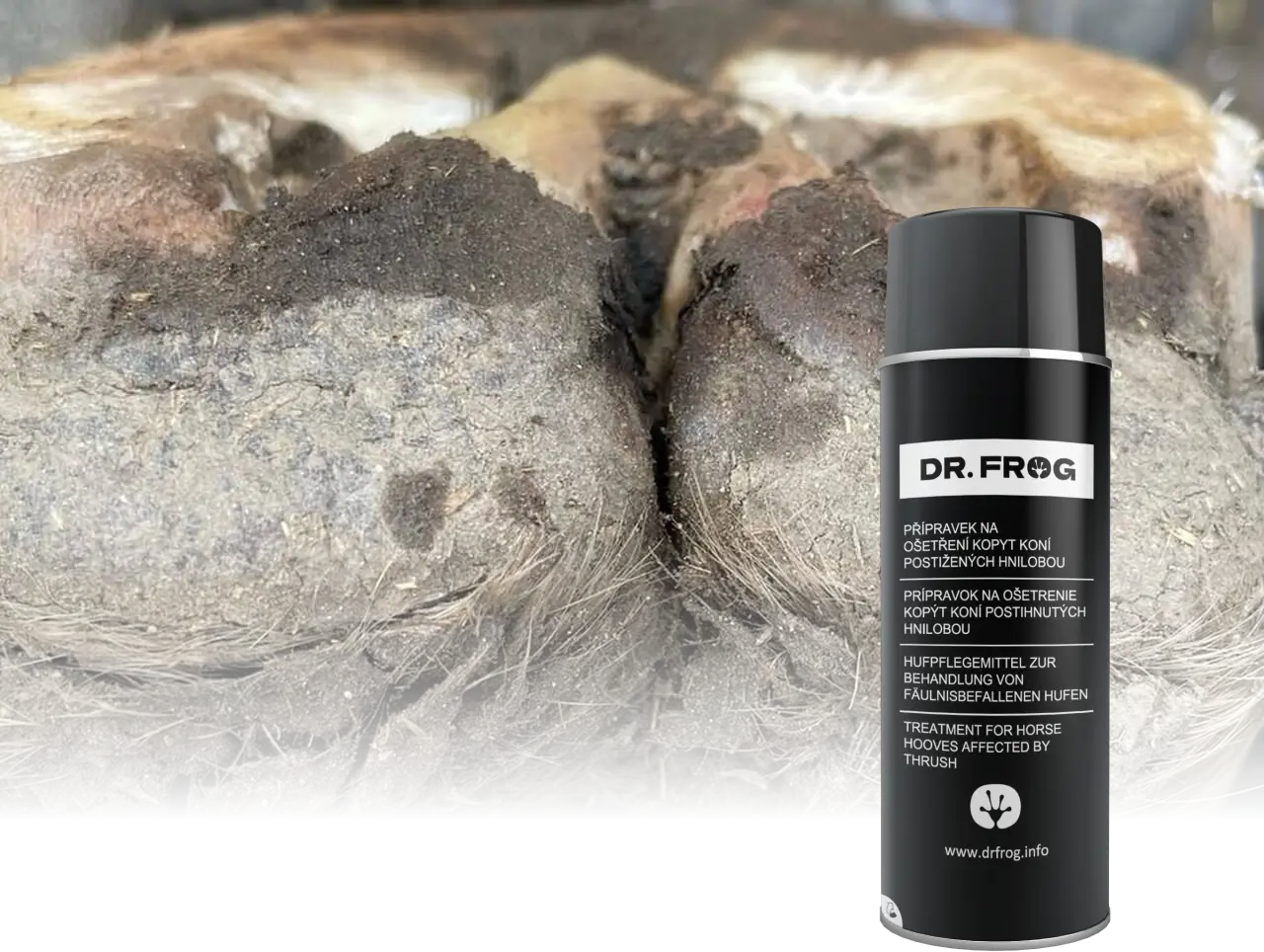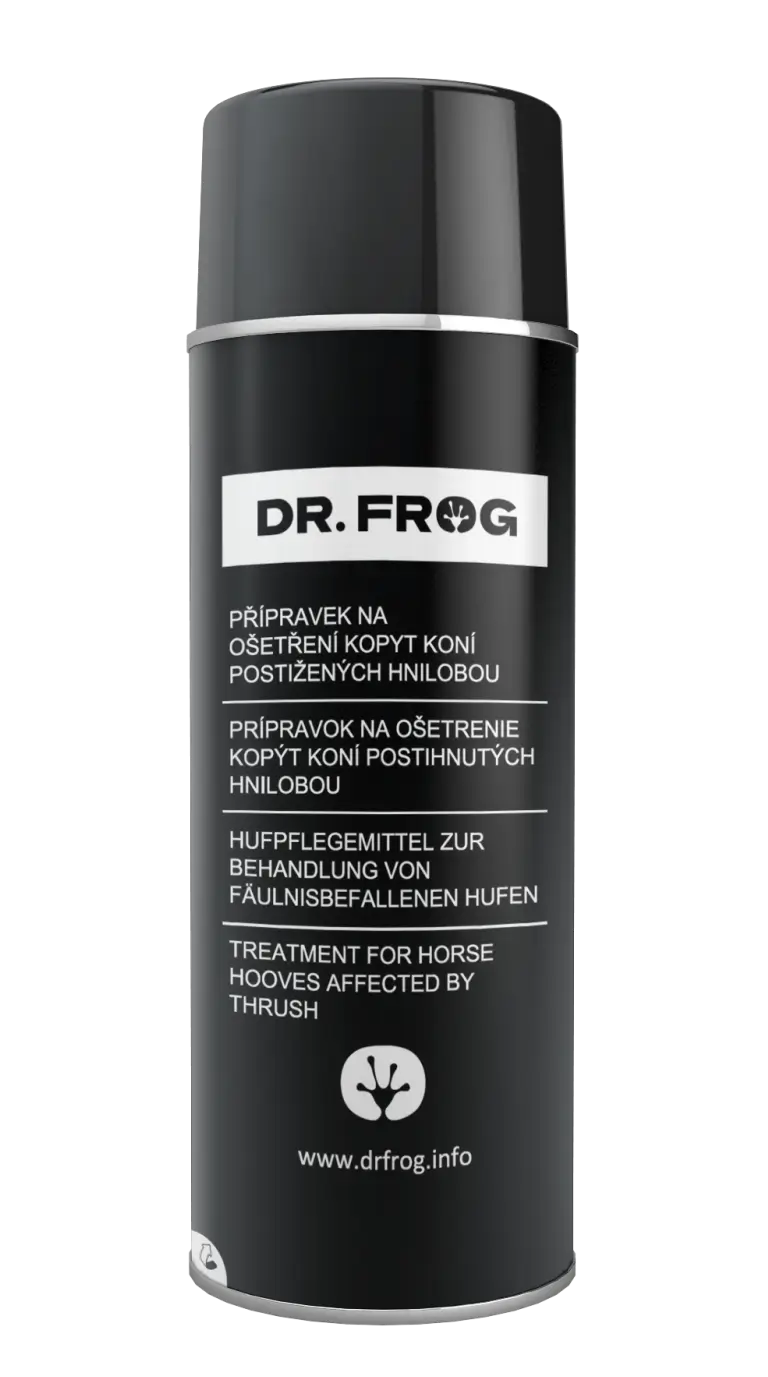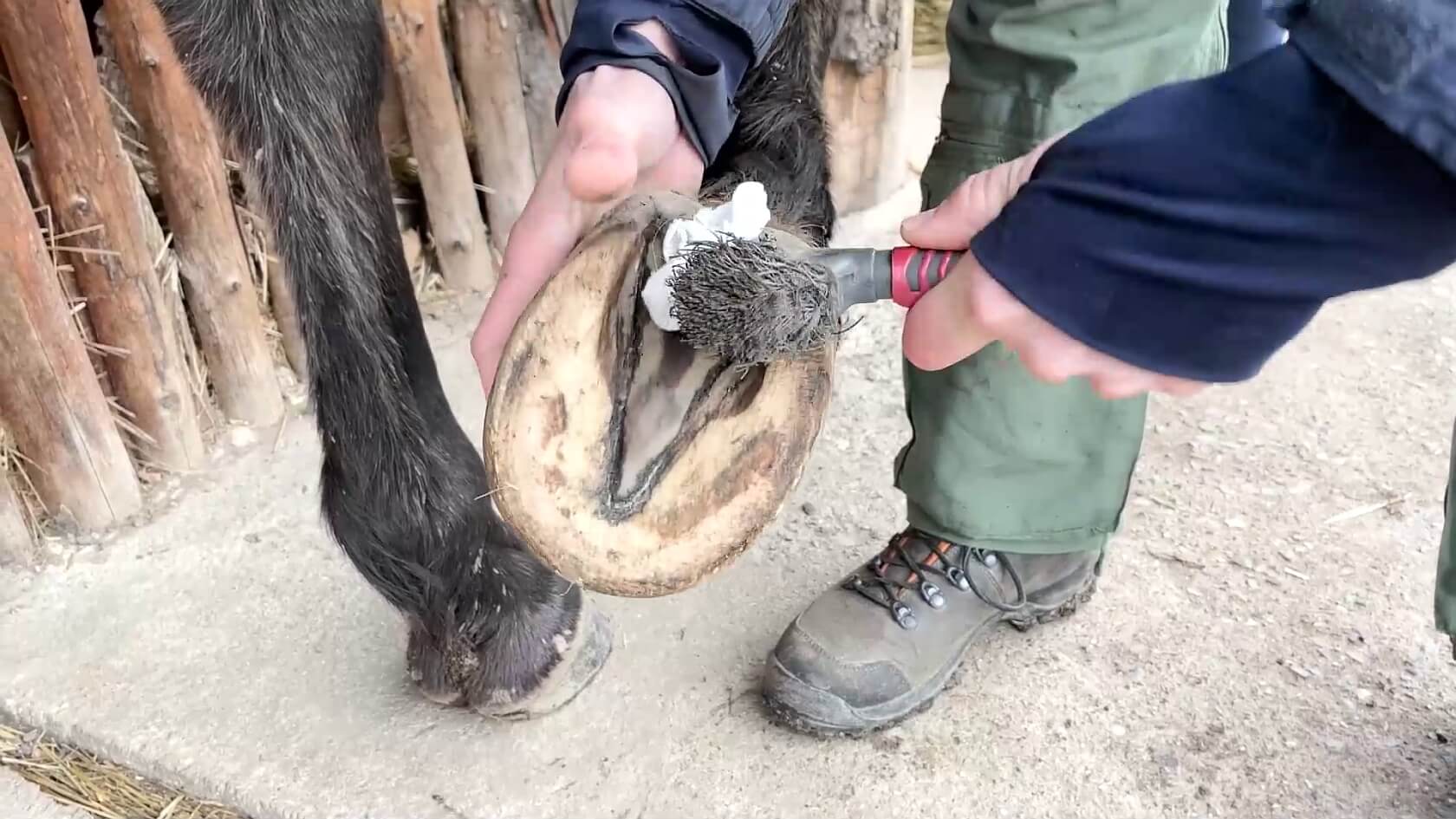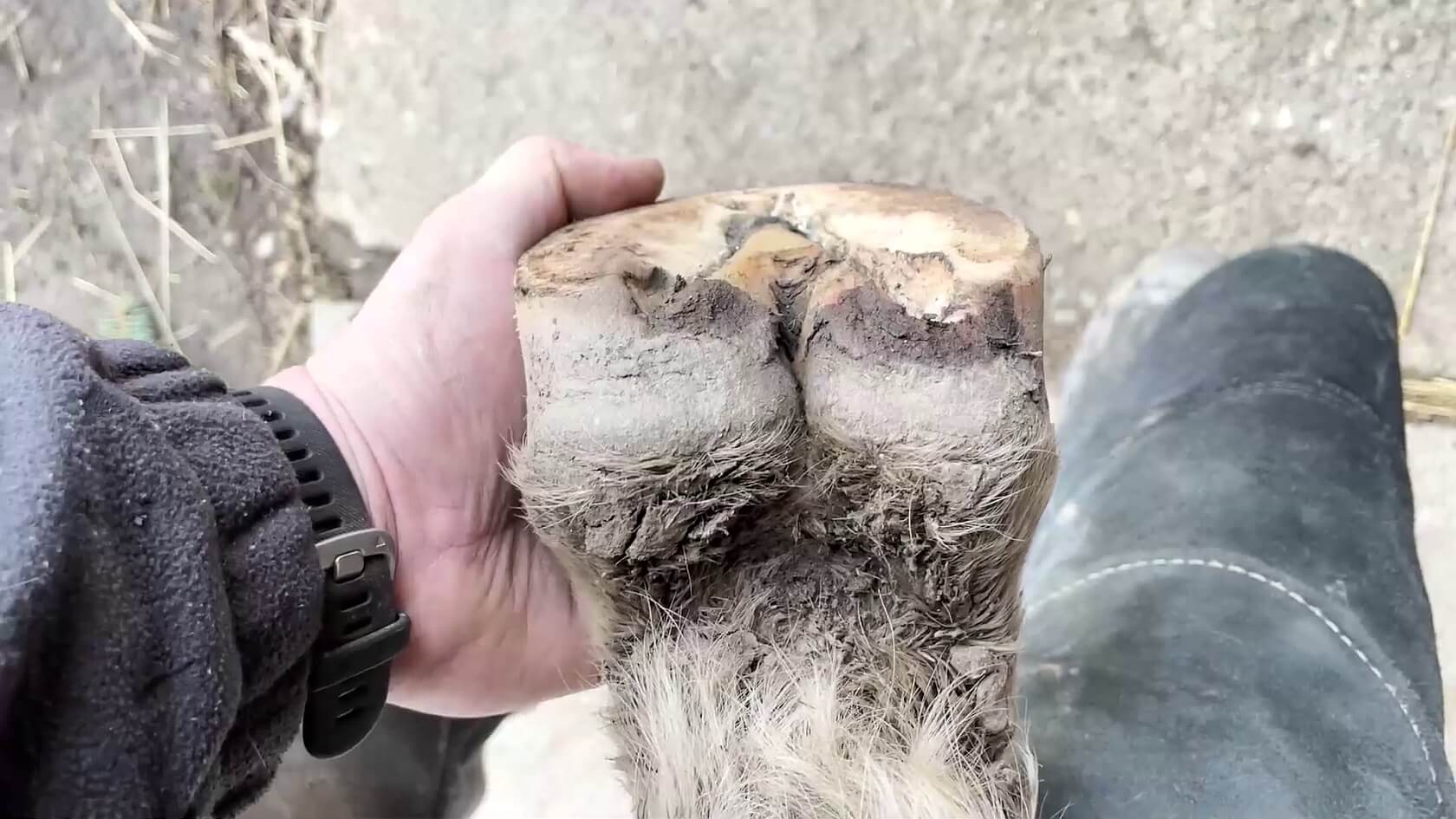Horse hooves thrush
Thrush is the most common disease affecting the horse’s hoof. It is an anaerobic bacterial disease, ie. caused by bacteria thriving and living in the absence of air.

Thrush is the most common disease affecting the horse’s hoof. It is an anaerobic bacterial disease, ie. caused by bacteria thriving and living in the absence of air.

It is very important to realize that the success in dealing with thrush is mainly in the hands of the owner or keeper and depends on their consistency and regularity in treating this sometimes fierce problem.
It is not uncommon for some neglected cases to be difficult to treat due to the horse’s high sensitivity and pain, which can cause the treatment not to be performed properly and the problem not inherently resolved.
It is characterized by:
The thrush most often begins in the central sulcus, and also here the horse’s greatest sensitivity in cleaning is manifested.
Central sulcus thrush above the area of soft bulbs of the heel. Sensitive reaction is manifested during cleaning.
Cleaned central sulcus, treated with Dr. Frog, filled with gaze and sprayed with Dr. Frog spray.
Hoove already without thrush. The picture shows an growing central sulcus horn, which still needs time for close sulcus by new horn to grow which has been thrushed in the past.
In the initial phase, there is effective hygiene, ie thorough, proper and regular cleaning using appropriate veterinary products or cutting by a farrier.
In the intermediate stage, it is necessary to ask the farrier to remove the affected cornea and to continue according to point 1.
In the well-developed phase, the rot usually proliferates beyond the soft-footed area or to the depth of the fibrous bullet area, the hoof often has almost no bullet or is largely damaged by bacteria.
Depending on the various aspects and surfaces, movement can become a very painful affair for horses due to the penetration of dirt into a sensitive area not protected by an adequate layer of horn.
At such a stage, the horse’s management should be adjusted so that at the time of healing (restoration of a healthy horn to such a force before the stimulation of sensitive areas is suppressed) there is no unnecessary irritation and possible development of secondary inflammation. It is advisable to ask your farrier to remove the dead or contaminated horn and follow his recommendations.


Treatment of horse hoove thrush, 2:07

Treatment of horse hoove thrush, 2:17
It is very important to realize that the success in dealing with thrush is mainly in the hands of the owner or keeper and depends on their consistency and regularity in treating this sometimes fierce problem.
It is not uncommon for some neglected cases to be difficult to treat due to the horse’s high sensitivity and pain, which can cause the treatment not to be performed properly and the problem not inherently resolved.
Ing. Martin Surýnek, Ph.D.
+420 777 092 910
drfrog@prokopyto.cz
Červenohrádecká 1544, 431 11 Jirkov, Czech Republic, IN: 069 89 471
| Cookie | Duration | Description |
|---|---|---|
| _hjSession_2910835 | 30 minutes | No description |
| _hjSessionUser_2910835 | 1 year | No description |